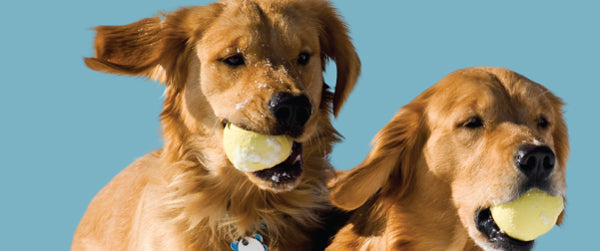Winter Feeding Tips for Dogs on a Raw Food Diet

Winter is a season of cosy nights and shorter, chilly days. But for your dog, it can also bring some unique challenges, especially if they are on a raw food diet. Just as we adjust our routines when the temperatures drop, our four-legged friends need some tweaks in their meals to stay healthy and happy throughout the colder months.
1. Adjust Portion Sizes for Winter
In colder weather, dogs burn more calories to maintain their body heat. This means your dog might need more food during winter, especially if they spend a lot of time outdoors or are more active. On the other hand, if your dog tends to stay inside more or isn't as active, their energy requirements might stay about the same.
Start by observing your dog’s weight and energy levels. If they seem to be losing weight or becoming lethargic, consider increasing their meal size. You can do this by adding more meat, fat, or bone to their daily portions. Remember, it's better to make gradual changes to avoid digestive upset.
2. Incorporate More Healthy Fats
1 Winter is a great time to add more healthy fats to your dog’s diet. Fats are a fantastic source of concentrated energy and will help keep your dog’s coat shiny, their skin healthy, and their body warm.
You can add sources of fat like:
-
Fatty fish, like salmon or sardines (fresh or if tinned, in spring water, not oil or brine)
-
100% Nut butters (not macadamia and not those containing xylitol)
-
Bone marrow
-
Natural yogurt
3. Hydration is Key
Even though it’s cold outside, hydration is just as important in winter as in summer. Dry, heated indoor air can quickly dehydrate your dog, so make sure they have access to fresh water at all times.
Consider adding moisture to their food to keep them hydrated. You can mix in some bone broth or water. Bone broth is full of nutrients and a delicious addition to any meal, providing extra warmth and hydration for your dog.
4. Watch the Cold Weather Exercise
Exercise plays a big role in your dog’s overall health, and winter doesn't mean you should put it on hold. However, it’s important to note that the type and length of exercise might change depending on the weather. If your dog loves to run outside but you're dealing with freezing temperatures, they may burn more calories to stay warm.
5. Look Out for Food Spoilage in Cold Temps
2 It’s tempting to leave raw food out longer during the winter, thinking the cold air will keep it fresh. However, remember that raw meat still spoils, even in low temperatures. Be sure to follow food safety guidelines and store leftovers properly in airtight containers or sealed bags. Never leave raw food exposed for too long, and always ensure you're using food within its recommended time frame.
Keeping your dog healthy and happy on a raw food diet during the winter months requires a few small adjustments, but nothing too drastic. By adjusting their portions, incorporating healthy fats, ensuring they stay hydrated, and watching their energy levels, you can help your dog thrive even in the chilliest of conditions.
References
1 6 Healthy Fats to Feed Your Dog
2https://basilsdogfood.co.uk/pages/ordering-and-delivery-faqs










